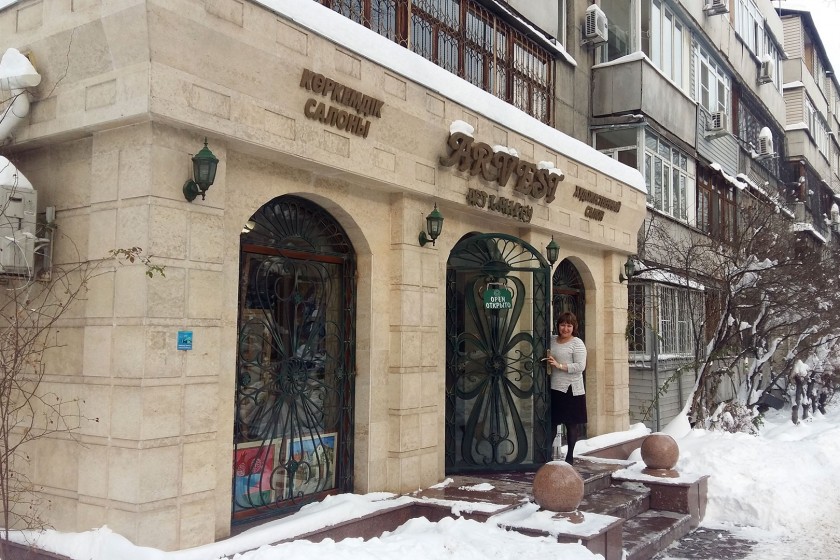
Kazakhstan’s Arvest Art Gallery: Armenian Operated but Multicultural in Scope
Kristine Aghalaryan
The recent snowfall in Kazakhstan is unprecedented for November, say locals.
It has covered the address and name of an art gallery in a central neighborhood of Almaty, the country’s largest city.
The only word, recognizable to a passing Armenian, on the façade of the residential building is Արվեստ (Arvest – Art). The building houses the Arvest Art Gallery. The ground floor gallery’s windows and door are both protected and adorned with iron bars and decorations fashioned by local Armenian blacksmiths.
I greet Gohar by saying “hello” in Armenian. The woman, who doesn’t look Armenian, is quick to respond. Barev, she answers. Gohar Boryan, daughter of the gallery’s founder, heads the public relations department. She says that her Armenian isn’t that great, but that she can understand the language adequately and talk about the gallery in Armenian.
Gohar says that while the name of the gallery is Armenian, the space is dedicated to art from various cultures. The works of foreign and local painters are on display. Some have been painted by Armenians.
“The uniqueness of our gallery is that all the paintings are one of a kind. There are no copies. It’s a big plus for us,” says Gohar, who has since reverted to speaking Russian. “We try to introduce the cultures of other countries to the people of Kazakhstan.”
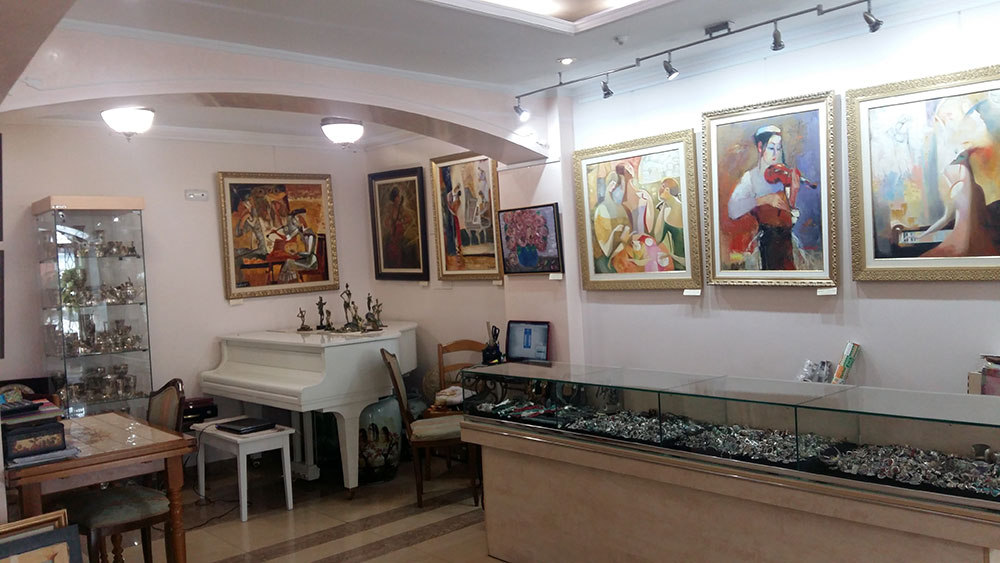
The gallery, now ten years old, is listed as one of the ten best in Kazakhstan. In addition to paintings, ceramics, sculptures, dolls and dinnerware, are also on display.
The items are also for sale. Paintings range from $70-$1,000. Those by Armenians can be purchased for $500-$600.
The gallery displays those items not for sale, the more expensive items, only on special days. For example, on the gallery’s annual anniversary. On this occasion, the “golden fund”, as the special collection is called, is displayed for an entire month.
“We don’t have a Saryan, but we have the works of Sargis Sanosyan, a local Armenian who paints in his style,” Gohar boasts. Sanosyan’s paintings are quite rare, but are included in the “golden fund”.
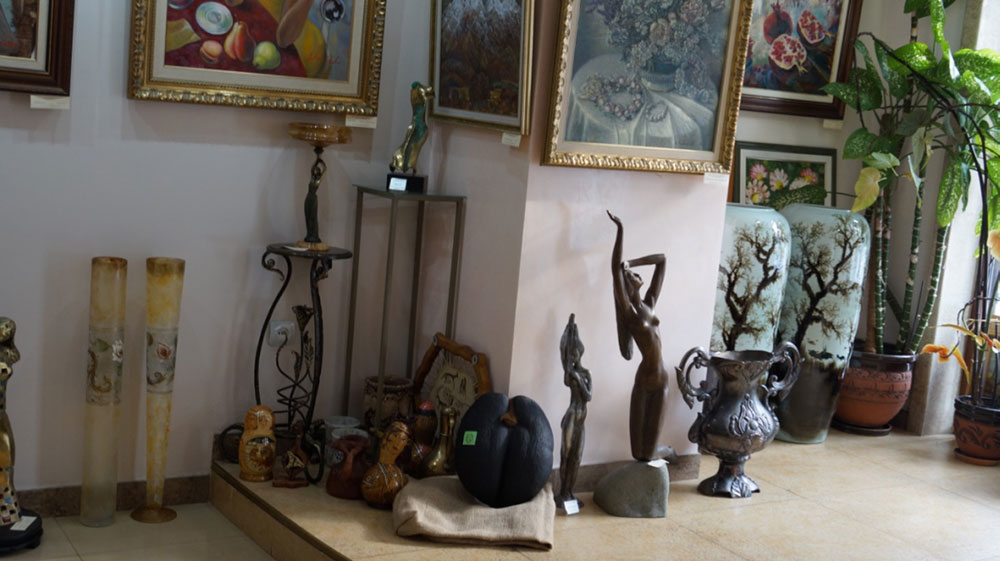
The gallery also organizes individual and group exhibitions, a New Year’s display, and master classes by prominent artists.
In September, the Almaty Museum invited painters from around the world to visit picturesque sights in Kazakhstan and paint them. Artists from Armenia also participated. “We always dreamt about an Armenian artist painting Kazakhstan with its colors because the schools are different and the colors used by Armenian painters are more vibrant and colorful. The local school is more classical and subdued,” says Gohar. These paintings are now on display at the Arvest Art Gallery.
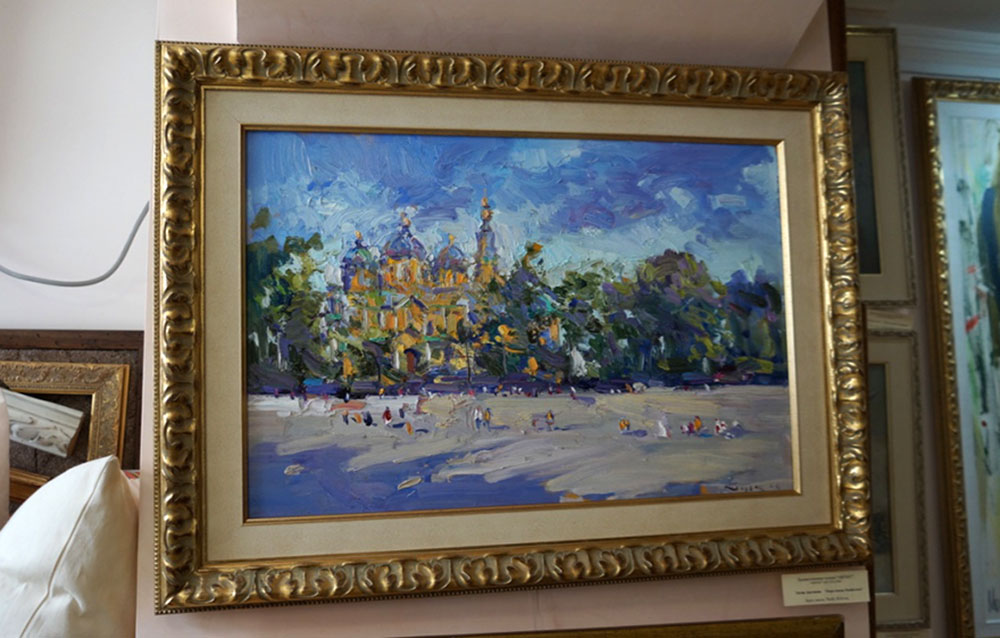
Gagik Avetisyan; Panfilov Park
Next to the statuettes of Spartak Gevorgyan are the works of Azerbaijani artists Inna Kostina and Oujal Akhverdiev. “We don’t see nationality in the paintings, just the painting. Here, all borders are erased,” says Gohar.
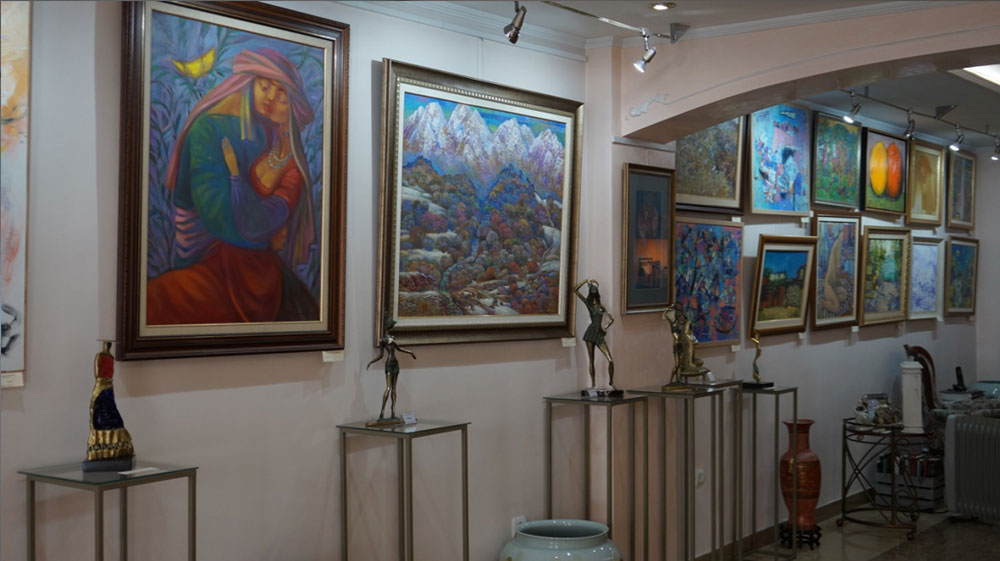
Gohar says that local Armenians don’t frequent the gallery that much despite its Armenian name. Our conversation is interrupted by a group of Canadian tourists. Elmira Askerova, the gallery’s art director, starts showing them works of artists of interest to them. Some of the works are in a studio not far from the gallery, so Elmira rushes to bring them.
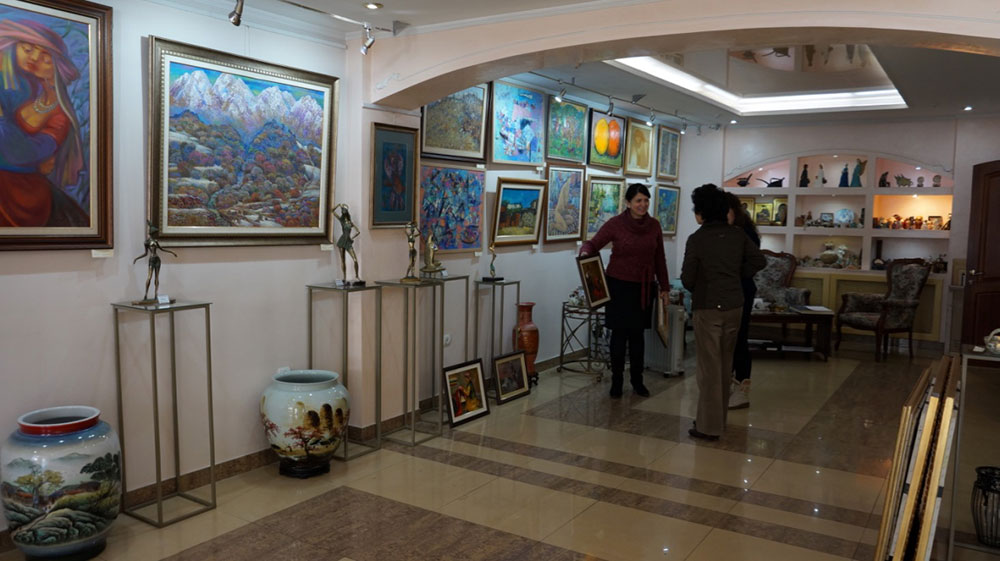
At this point, Rima Tsakanyan, the “granddame of the gallery” enters and starts helping her employees. While working at a construction firm, Rima always dreamt about opening an art gallery. Her dream came true in 2007. She purchased the space, renovated and furnished it, and then started stocking it.
“Keeping a gallery open in Kazakhstan isn’t easy. It’s not a business with customers lined outside waiting to buy. It’s more of a spiritual calling for me and I like it,” says Rima Tsakanyan.
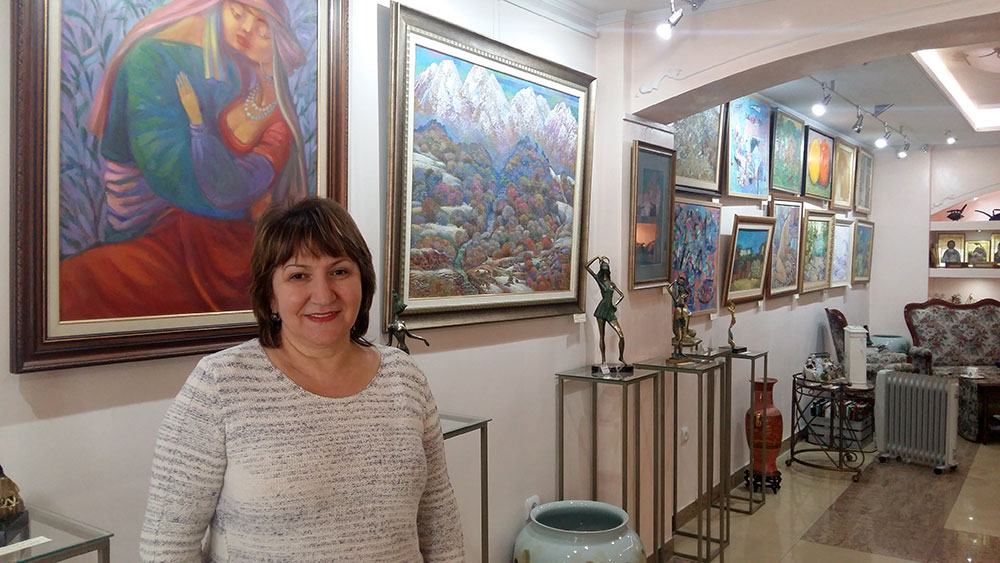
Initially, Rima wanted to open a gallery solely devoted to Armenian art. She soon understood it would be somewhat one dimensional and would thus attract few visitors. So, she expanded the gallery’s cultural and geographical scope.
Rima worked in a construction company for 23 years. She says that while the gallery isn’t a money maker, it covers its costs. While she owns the space, Rima must still pay a substantial amount for utilities, wages, security and other expenses. “Not everything is to make money. This is a beautiful business that is important. I like it. I try to approach it from an art perspective.”
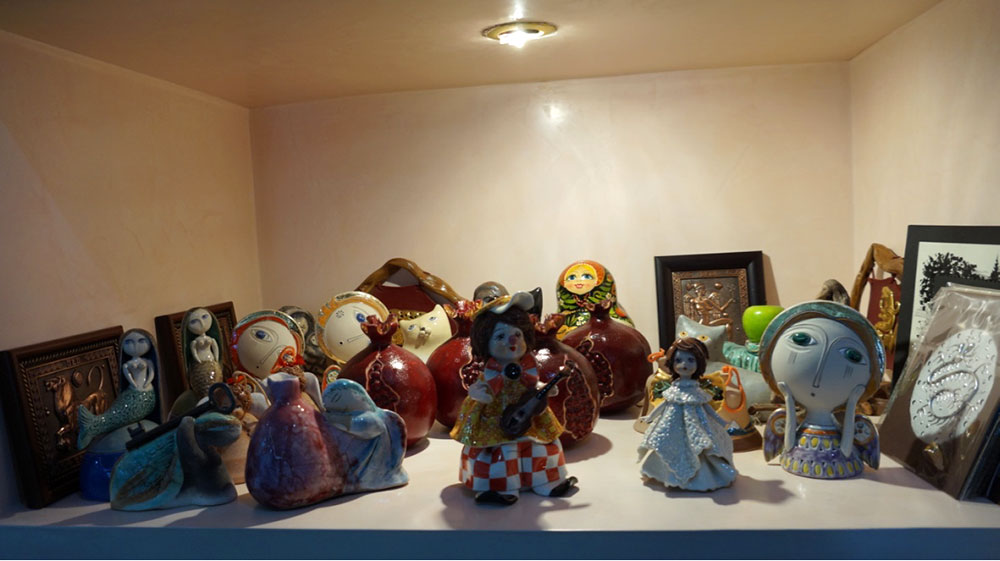
Rima and her husband moved to Kazakhstan from Armenia with a three-year professional work contract. They’ve lived in Almaty for the past 33 years.
Rima studied to be a teacher in Armenia and then took courses in education psychology and law in Kazakhstan to gain the professional specialization needed for her work. Art has always interested her, and she’s visited many of the world’s famous museums and galleries. She also heads an Armenian women’s group in Kazakhstan.
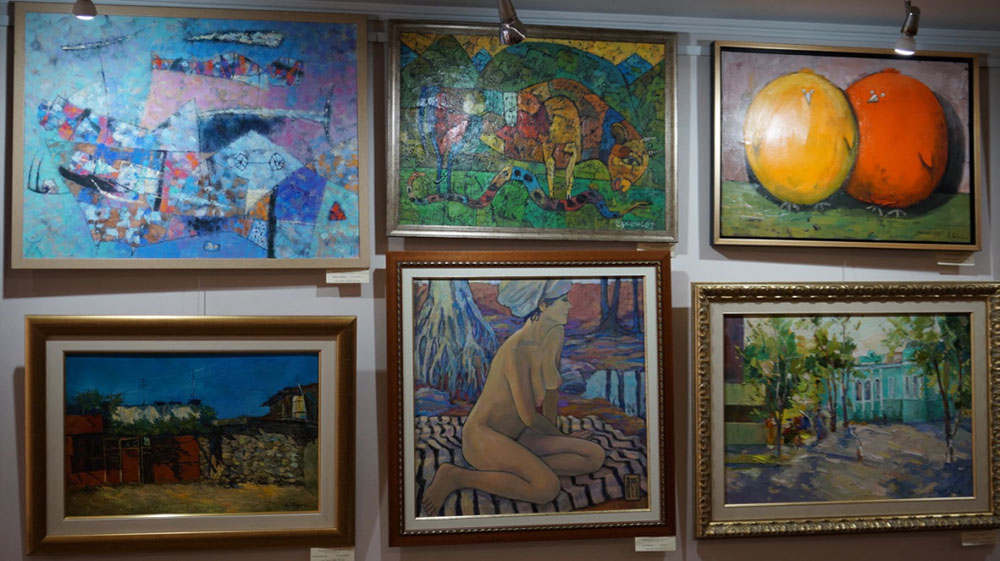
The Armenian population in Kazakhstan is officially pegged at 25,000. The Armenian community started to form in the second half of the 19th century. Rima says the community is divided into two.
In March 2014, the Saint Karapet Armenian Church, built by local businessman Artyush Karapetyan, closed its doors. Parish priest Father Markos Sargsyan had a falling out with Karapetyan. The businessman said he had built the church and could close it, which he did. Father Markos was transferred to Astrakhan. The church’s Sunday school and parish clubs were also closed. Some in the community were annoyed at the turn of events and a split ensued.
St. Karapet Armenian Church (Wikipedia)
Rima left the Nairi Armenian Cultural Center because of the split. Two years ago, she and a group of other Armenians founded the Masis Association of Kazakhstan Armenians. The organization runs a Sunday school where Armenian is taught.
Rima says the community is trying to reorganize and organize activities. In the meantime, the Arvest Art Gallery will celebrate its tenth anniversary this February.
 Videos
Videos Photos
Photos




Write a comment